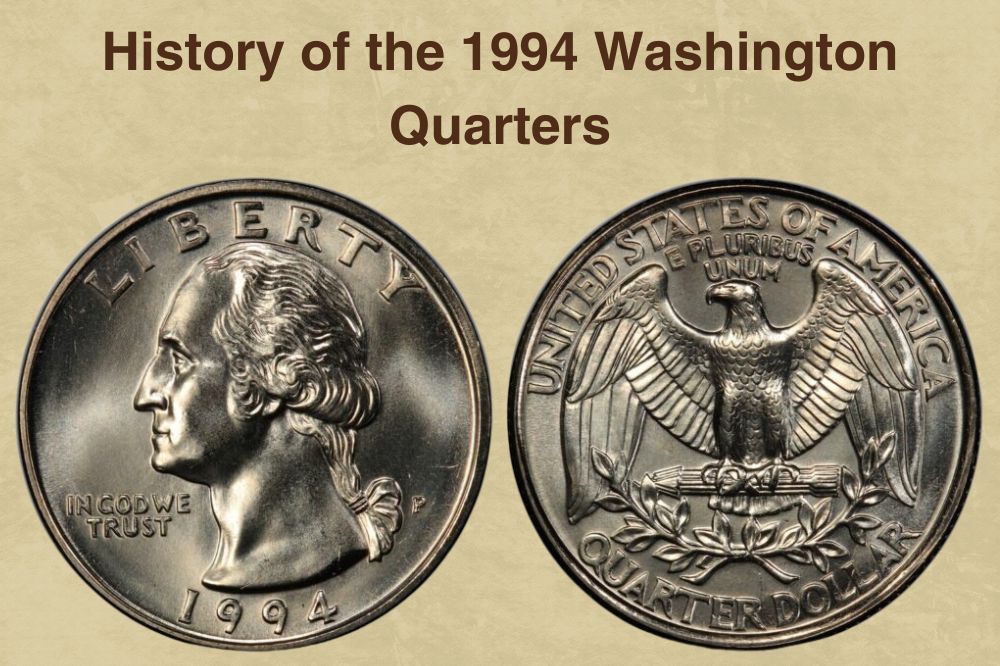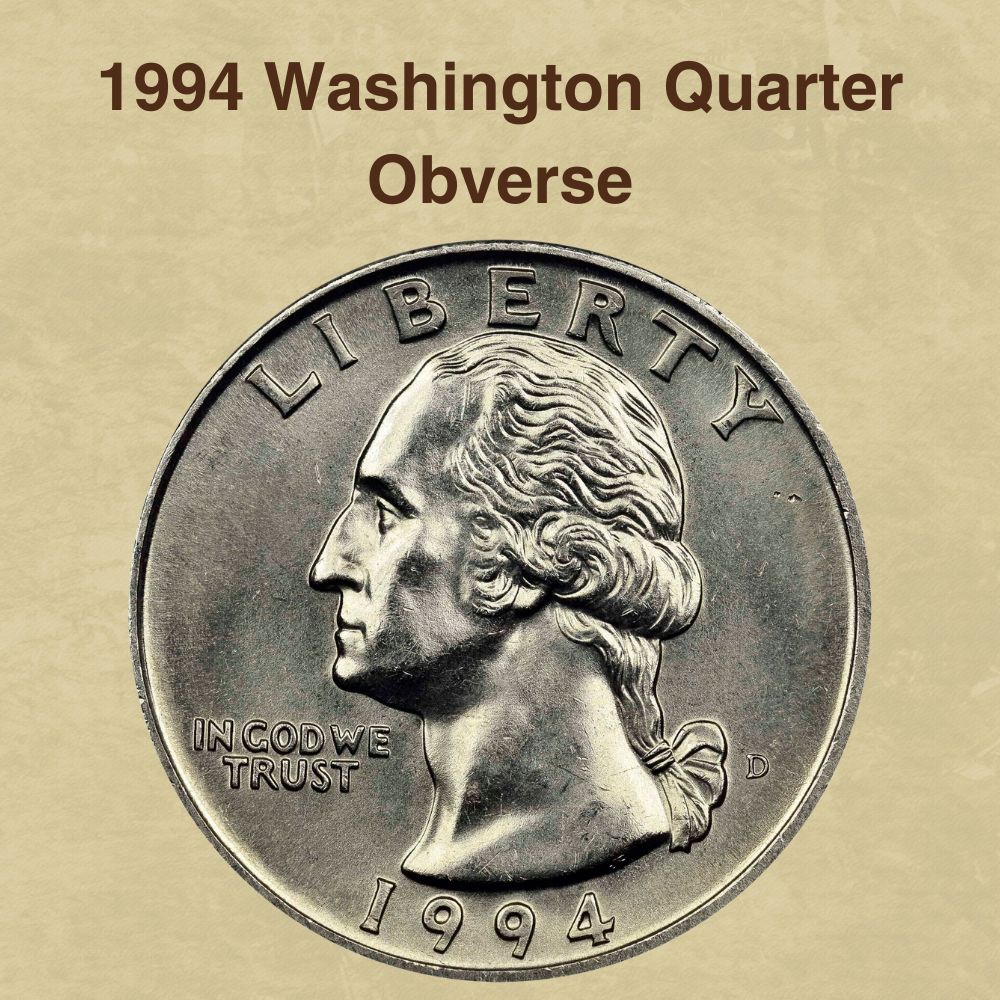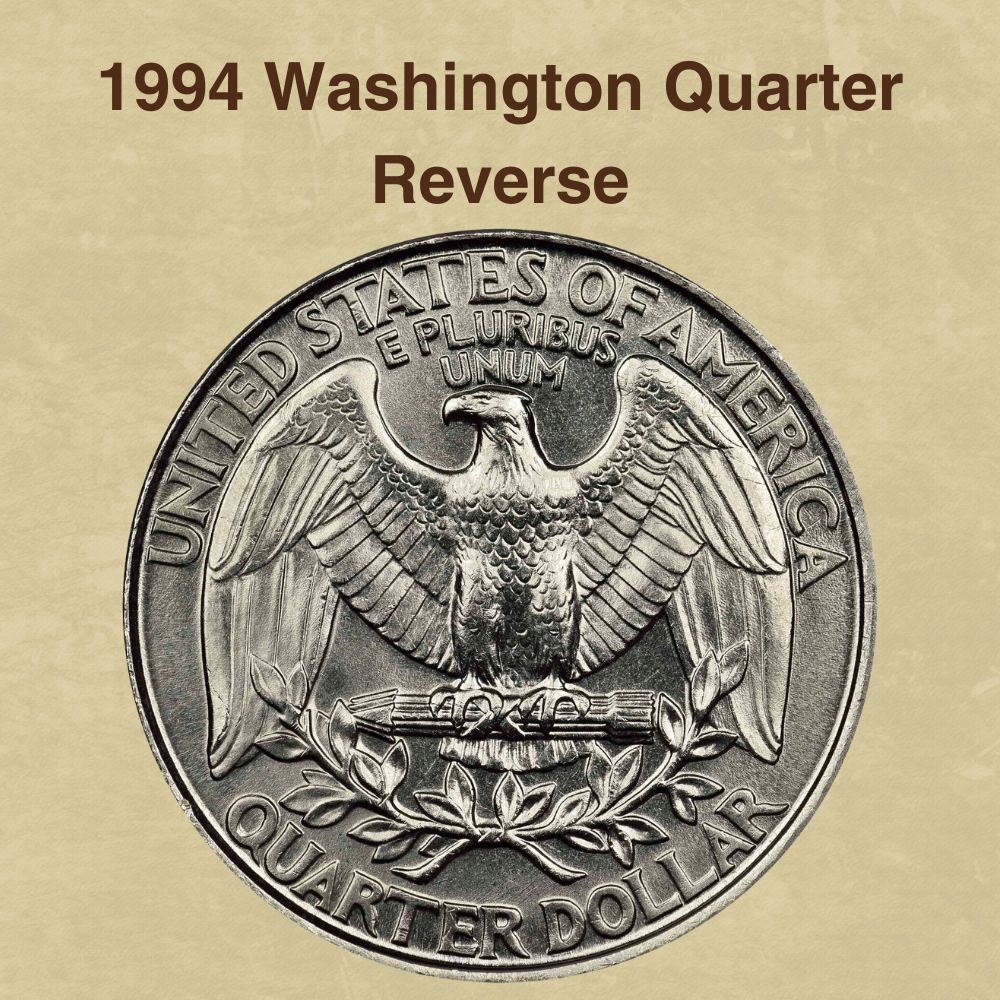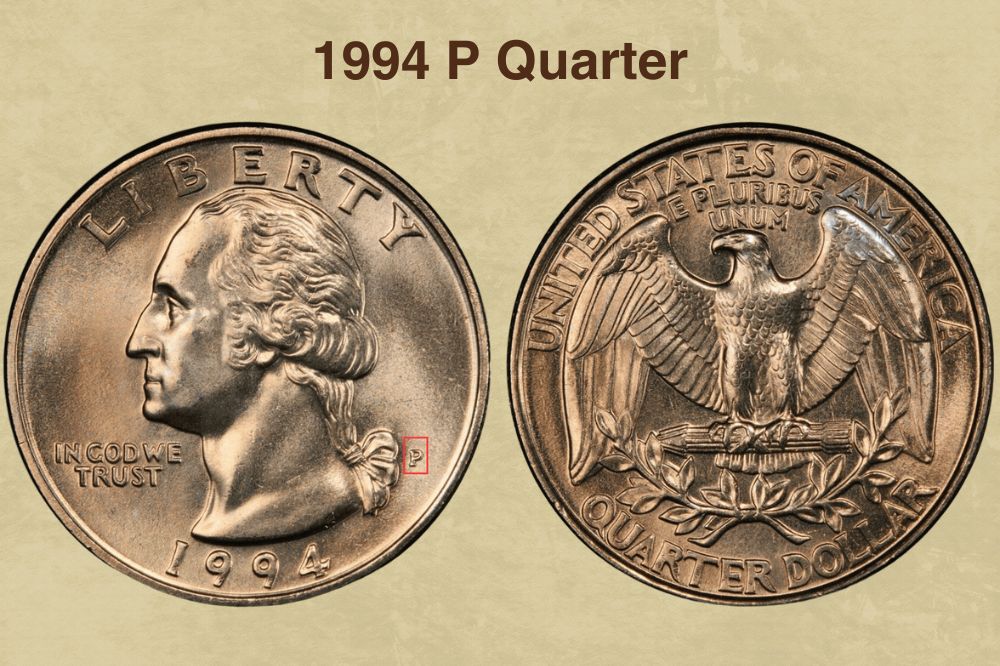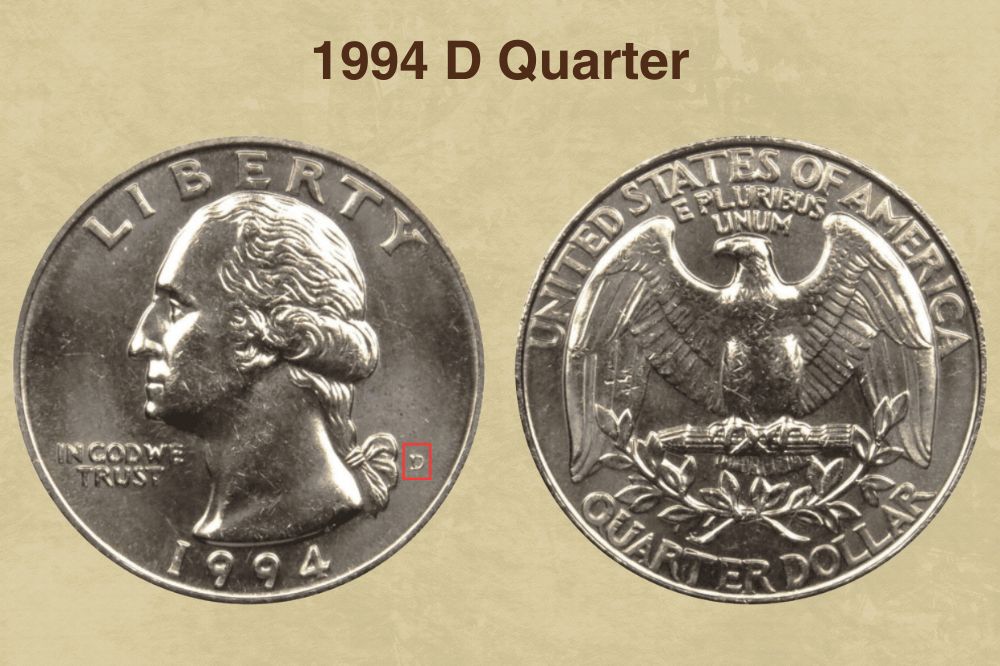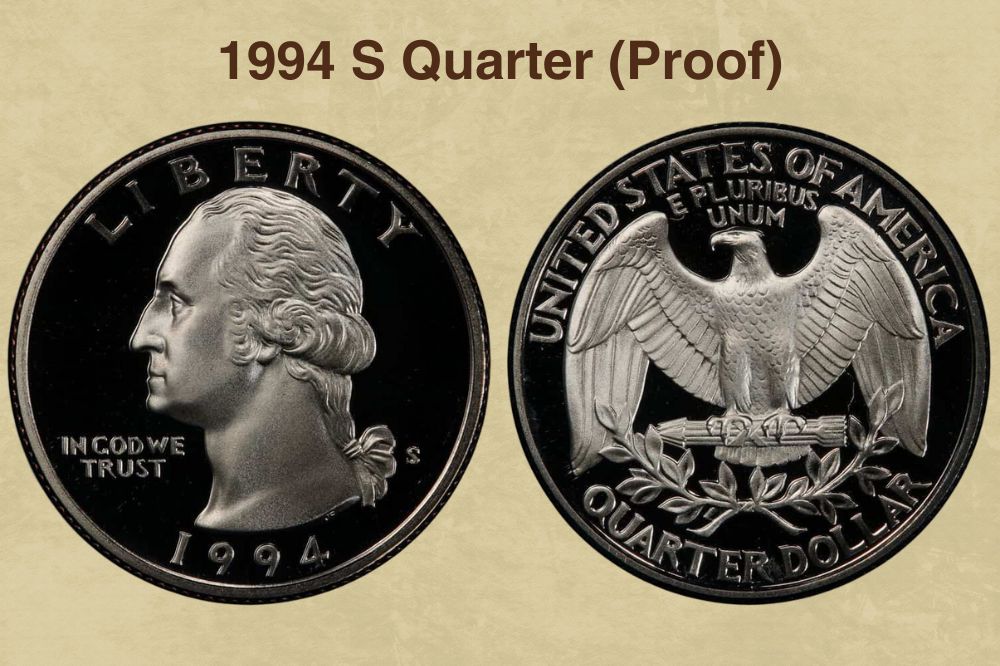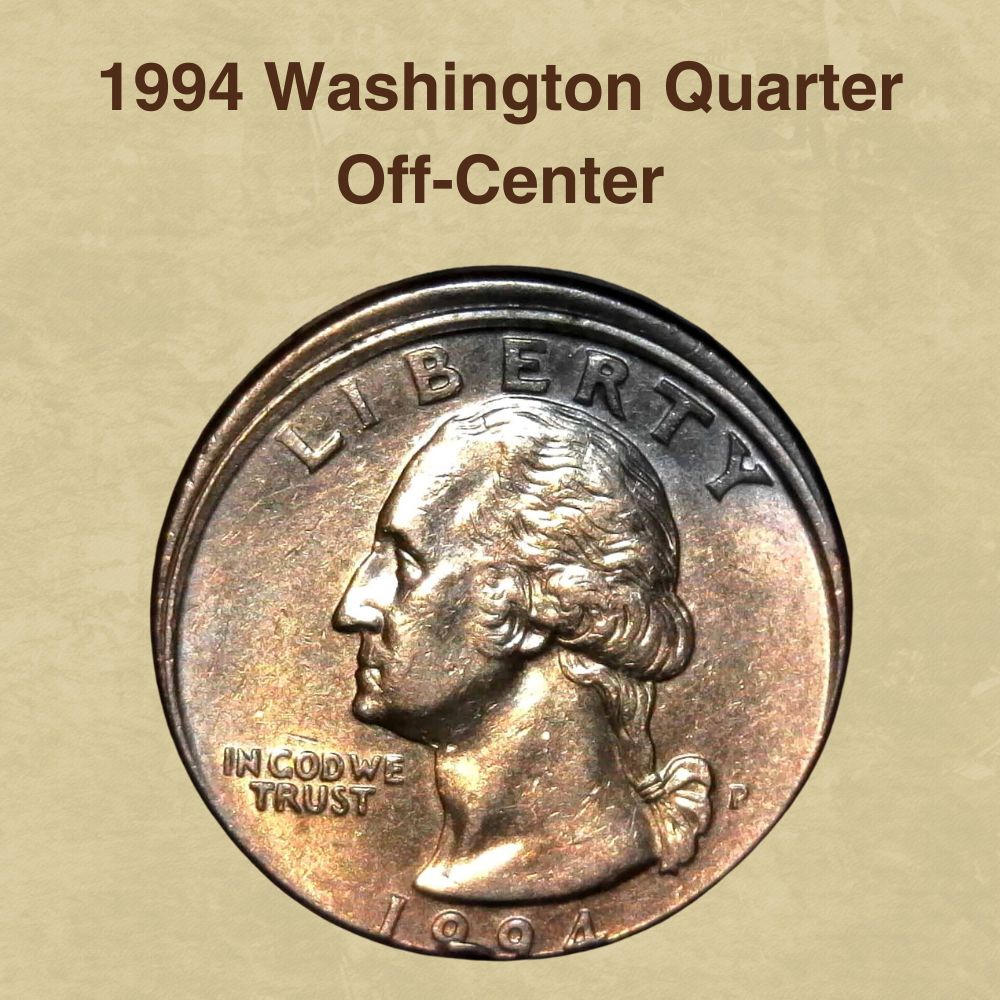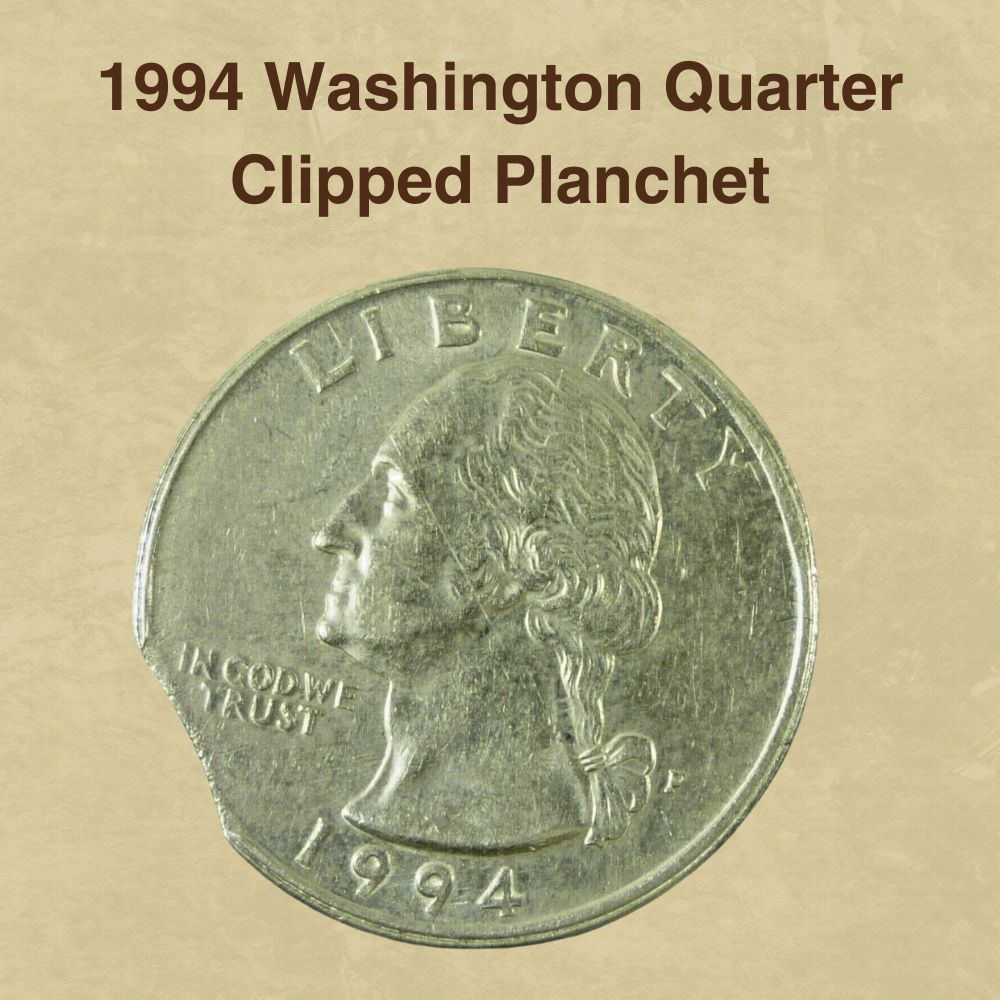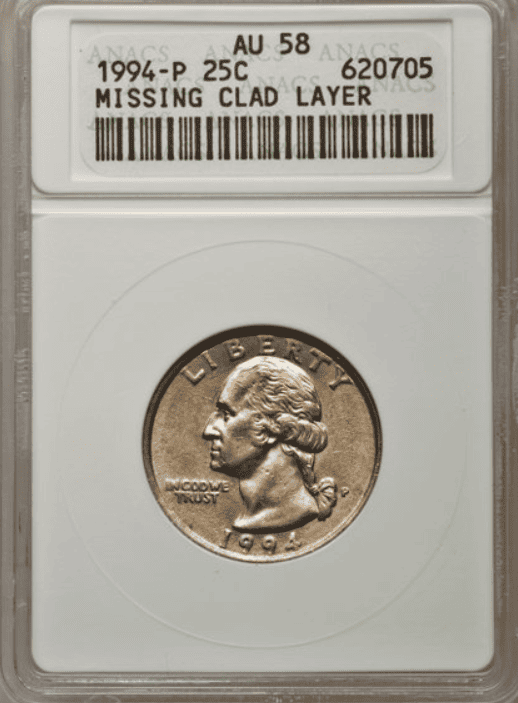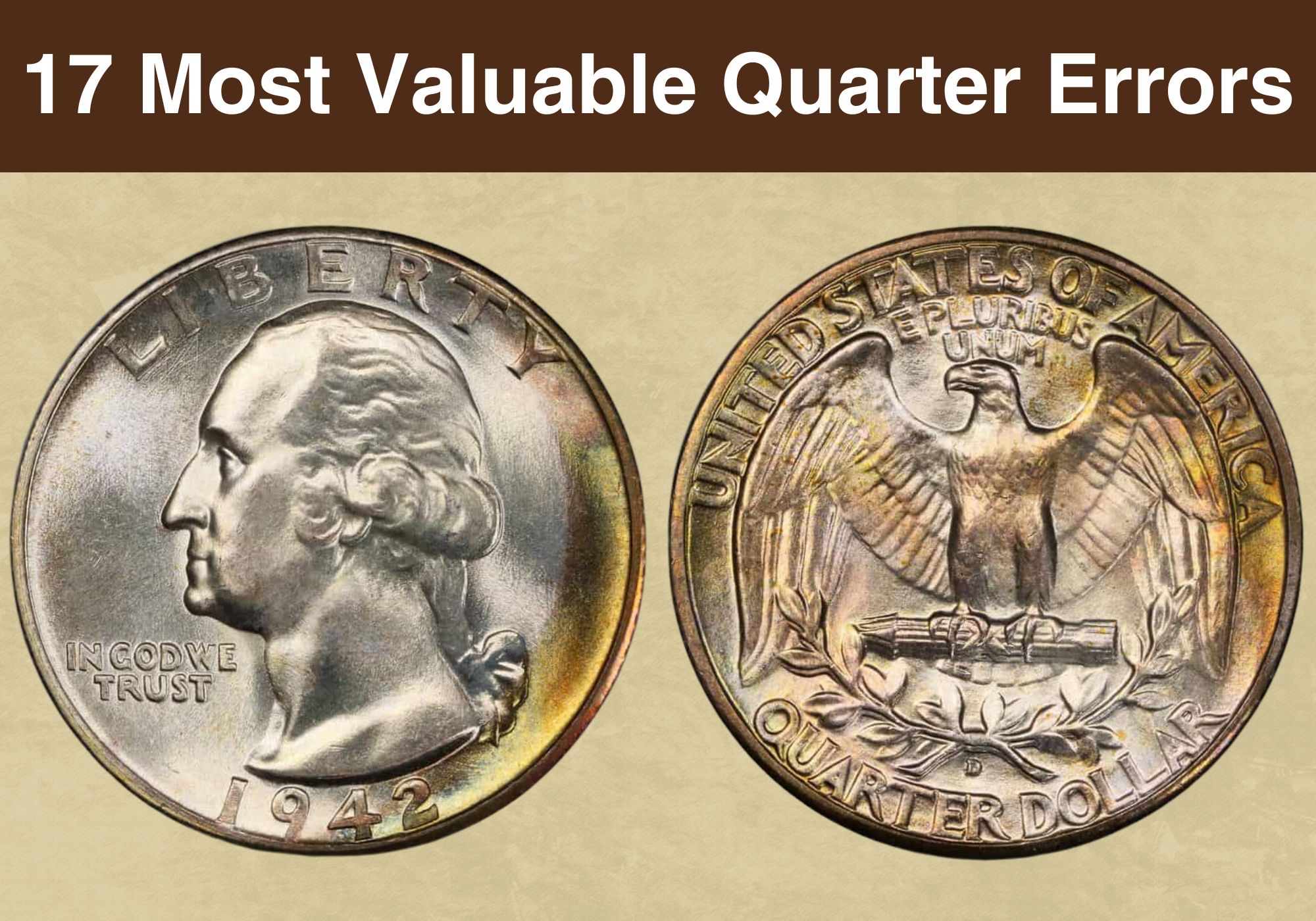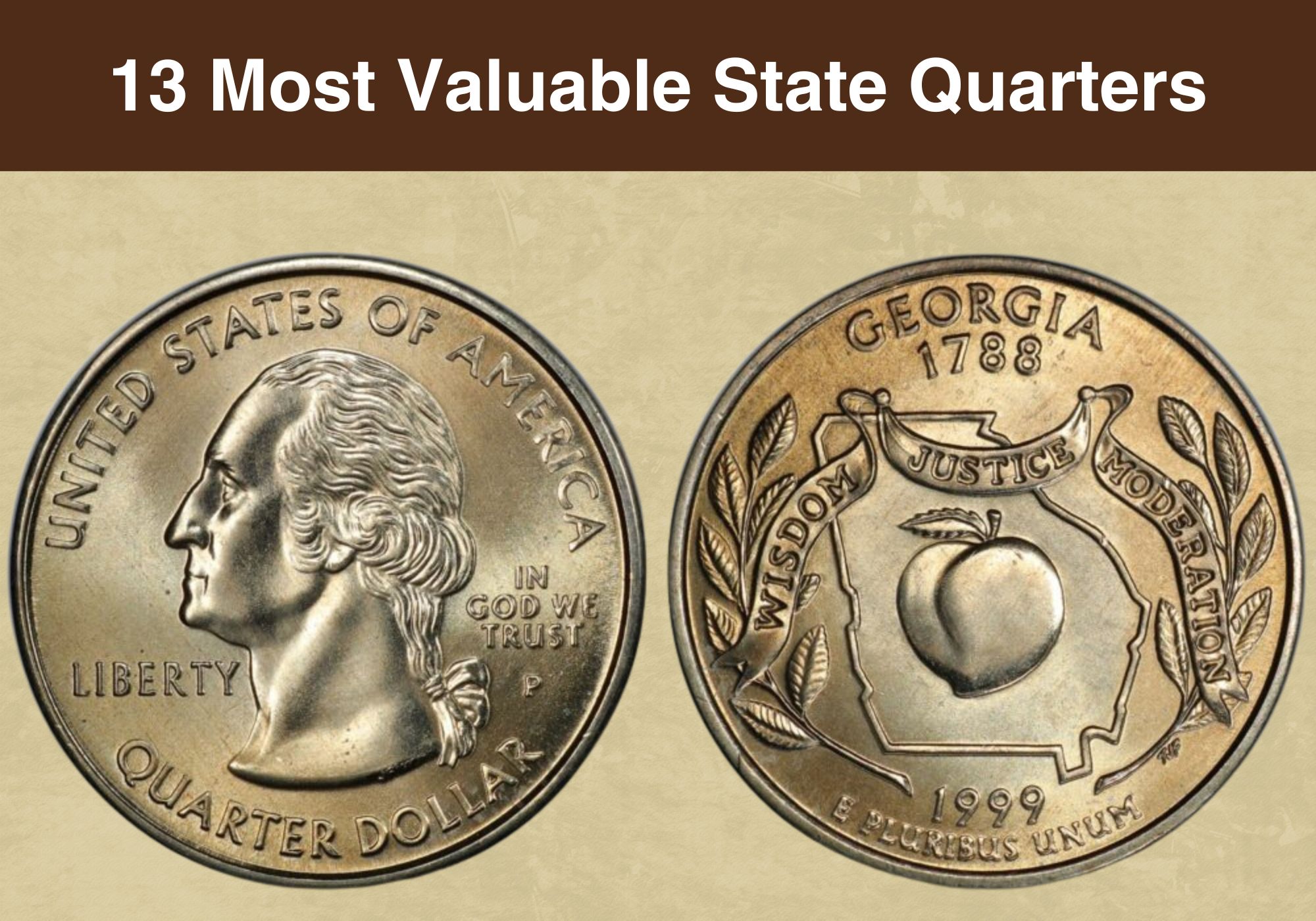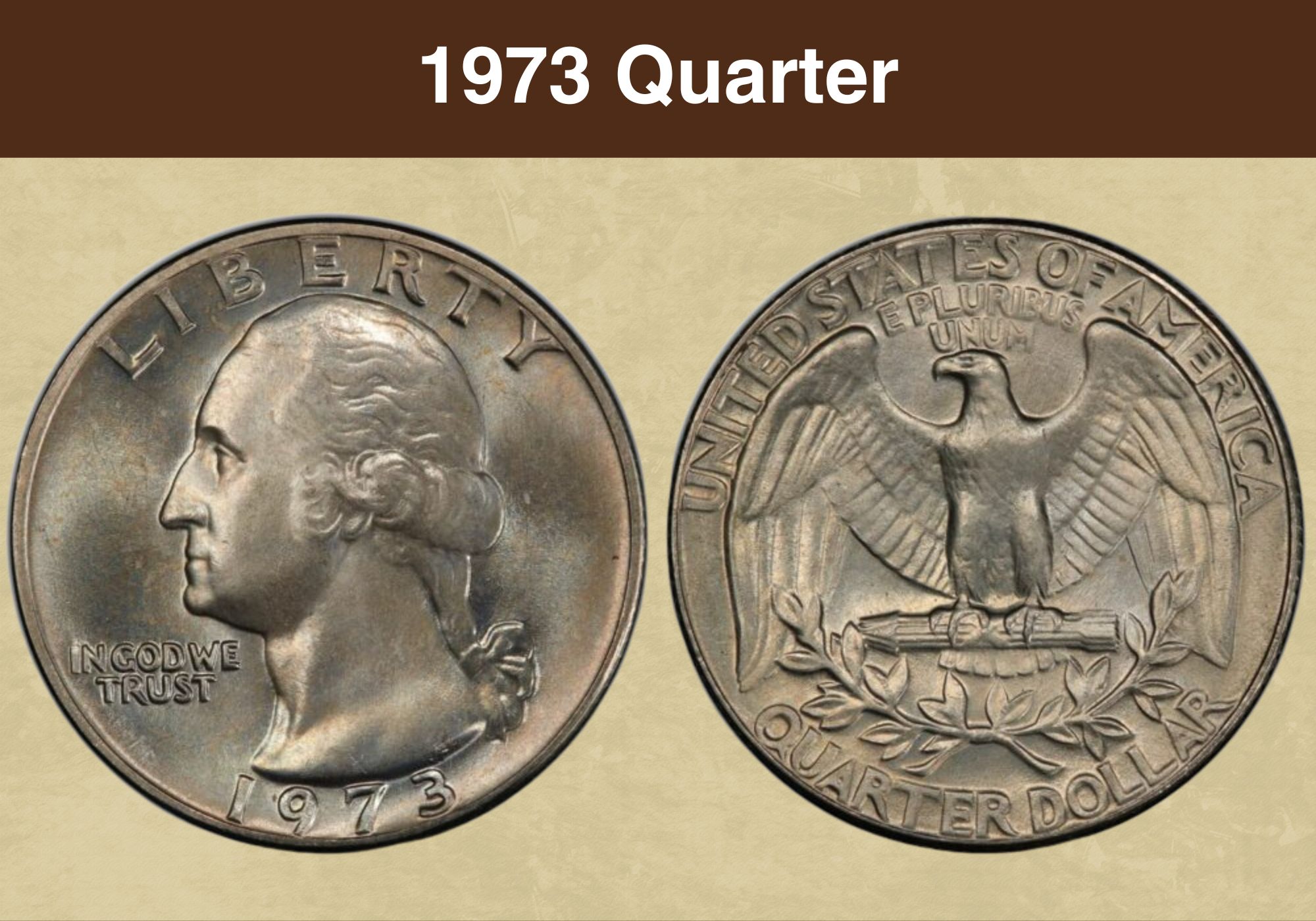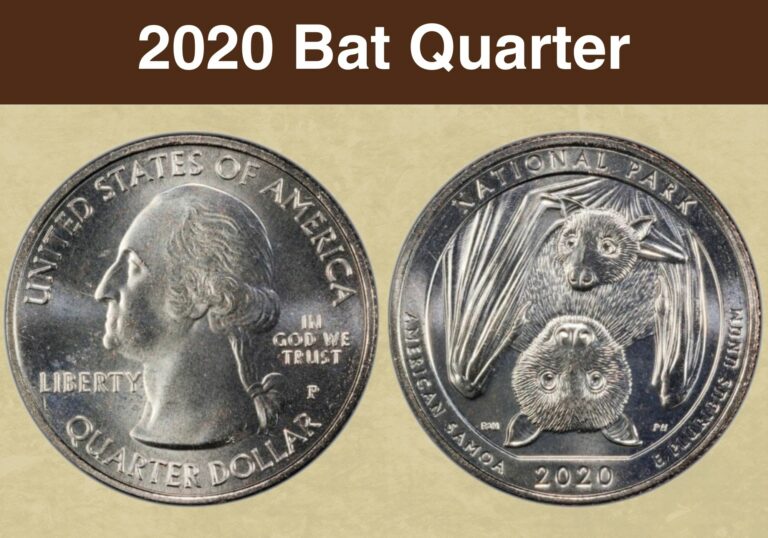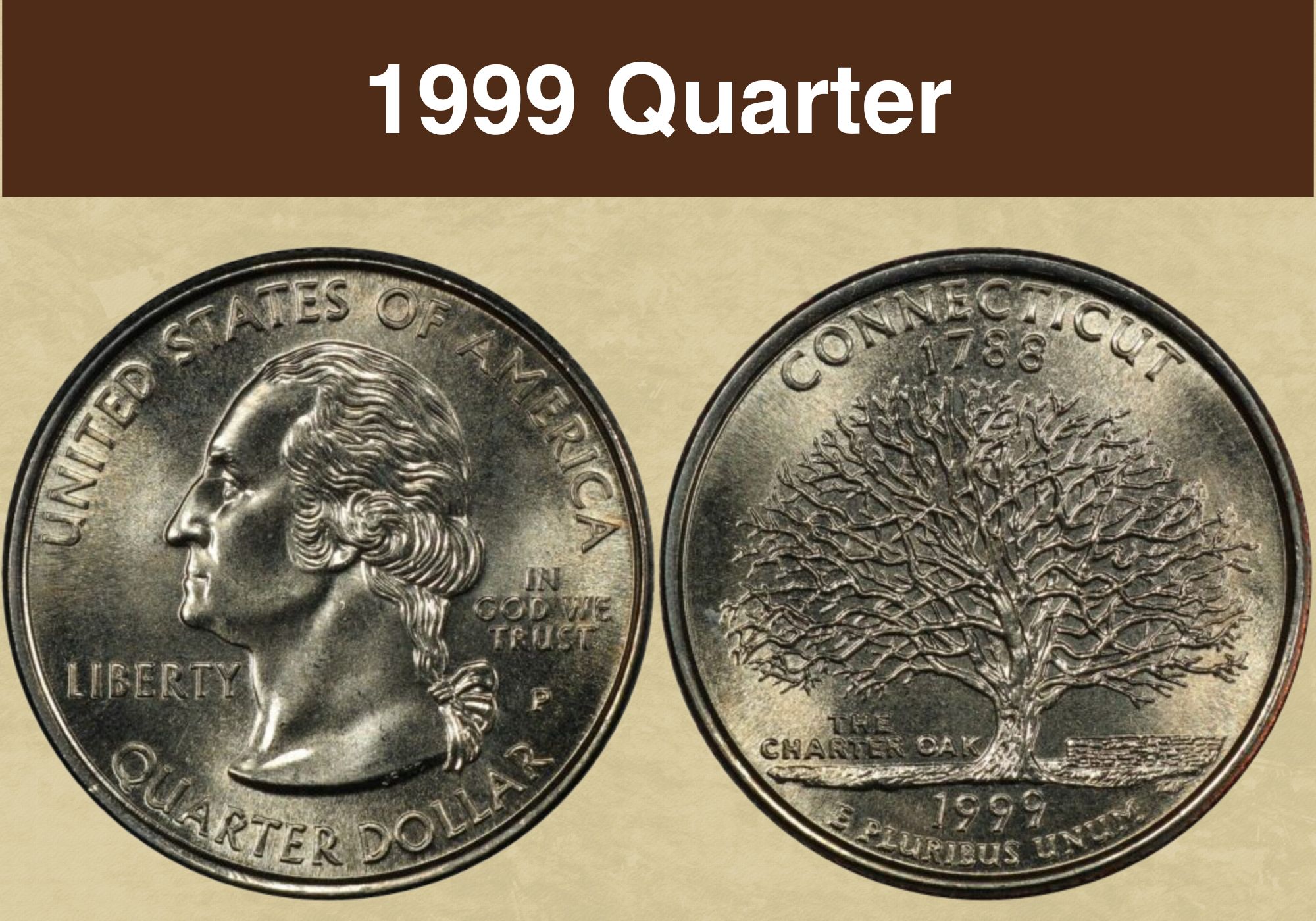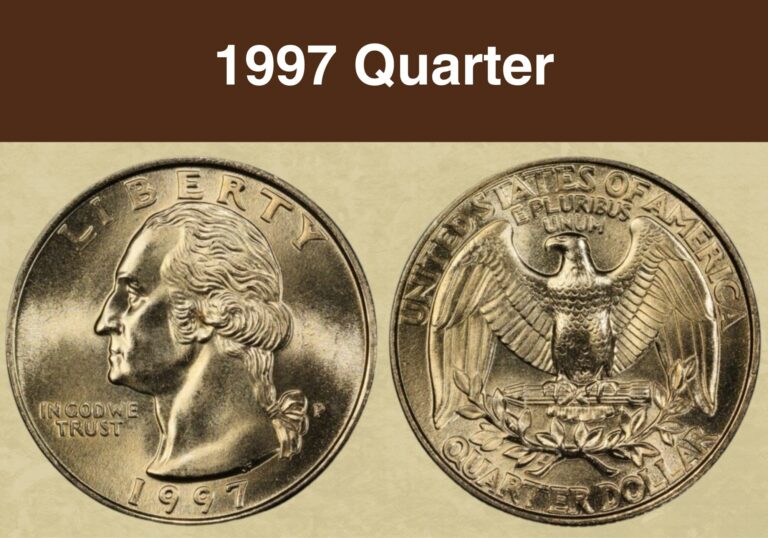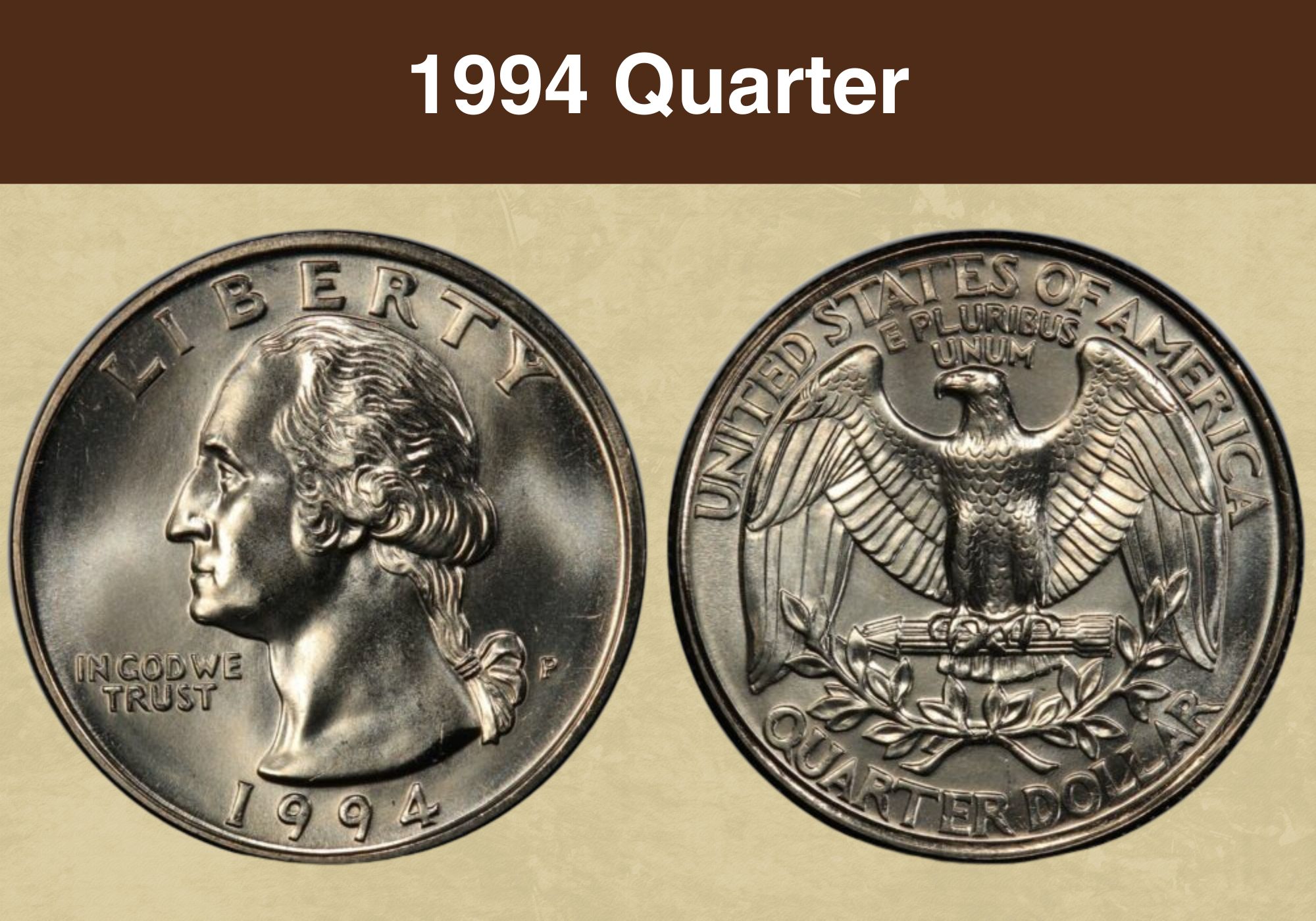
Coin Value Contents Table
- 1994 quarter Value Chart
- History of the 1994 Washington Quarters
- 1994 Washington Quarter Types
- Features of the 1994 Washington Quarters
- 1994 Washington Quarter Grading
- 1994 Washington Quarter Value Guides
- 1994 P Quarter Value
- 1994 D Quarter Value
- 1994 S Quarter Value (proof)
- Rare 1994 Washington Quarter Errors List
- Where to Sell Your 1994 Washington Quarter ?
- FAQ about the 1994 Washington Quarter
The Washington quarters have a rich history and are only the second American coins with the image of an actual person. Their original purpose was to pay tribute to George Washington as one-year commemorative coins. However, their production has continued until today.
Initially, the Washington quarter composition was 90% silver, but that was changed due to the increase in the silver price in 1965. This lower-quality metal combination, the high mintage, and a relative collectors’ disinterest in modern coins means that the 1994 quarter value is pretty low.
1994 quarter Value Chart |
||||
| Condition | 1994 P clad | 1994 D clad | 1994 S clad | 1994 S silver |
| MS 65 | $7 | $26 | / | / |
| PR 65 | / | / | $5 | $8 |
History of the 1994 Washington Quarters
The US Mint started minting the first quarters in 1796 with Lady Liberty on the obverse and the American bald eagle on the reverse. The first Washington quarters appeared in 1932, breaking the continuity of the previously standard design. With this coin, the mint marked the 200th anniversary of one of the Founding Fathers and the first President of the new nation.
Preparations for celebrating this jubilee started in 1924, announcing a competition for a new design. The guideline was to add a Washington portrait on the obverse and one of the America’s crucial national symbols on the reverse.
1994 Washington Quarter Types |
||
| Location | Year | Minted |
| Philadelphia | 1994 P clad quarter | 825,600,000 |
| Denver | 1994 D clad quarter | 880,034,110 |
| San Francisco | 1994 S clad quarter (proof) | 2,484,594 |
| San Francisco | 1994 S silver quarter (proof) | 785,329 |
| Total | / | 1,708,904,033 |
At the first competition, officials chose the half-dollar design of sculptor Laura Gardin Fraser. In the meantime, Congress decided to replace the selected denomination with quarters, so the competition started anew.
Mrs. Fraser also won this competition, but then-Treasury Secretary disputed that choice and chose John Flanagan’s idea. The then-adopted design of the Washington quarter remained unchanged until 1998.
Due to the jump in the silver price on the stock market in 1965 and the incredibly high production costs, the US Mint changed coins composition. The new one included an alloy of copper and nickel.
Also read: Top 13 Most Valuable State Quarters Worth Money
Features of the 1994 Washington Quarters
Most US Mint coins have changed their appearance and composition during minting. The Washington quarters changed its original metal composition in 1965 but kept the same appearance for years. Thus, the original design from 1932 remained unchanged until 1998.
The obverse of the 1994 Washington Quarter
On the quarter obverse is the dominant bust of George Washington facing left. Although the profile is depicted extremely simply and without much detail, the image of the former President radiates dignity.
Above his head stretches the word LIBERTY, while on the lower rim, you can see the minting year, 1994. In front of Washington’s face, it is possible to read the phrase IN GOD WE TRUST.
On the right, at the height of the bow on the President’s ponytail, is the mint mark. It can be one of three letters used to mark the corresponding mint (P, S, or D).
The reverse of the 1994 Washington Quarter
The national symbol, the American bald eagle with spread wings, occupies the reverse center. It carries an arrow bundle in its claws, and you can see olive branches below them. Since these symbols represent war and peace, they are depicted together to make a balance.
Directly above the eagle’s wing tips is the saying E PLURIBUS UNUM, while the US name is along the top quarter rim. On the lower edge, you can see the QUARTER DOLLAR denomination.
1994 clad quarter |
1994 silver quarter |
|
| Face value | $0.25 (25 cents) | $0.25 (25 cents) |
| Compound | Copper and nickel (3: 1) with a copper core | Silver (90%) and copper (10%) |
| Coin diameter | 0.9551 inches (24.26 mm) | 0.9551 inches (24.26 mm) |
| Coin thickness | 0.06889 inches (1.75 mm) | 0.06889 inches (1.75 mm) |
| Coin weight | 0.20 ounces (5.67 g) | 0.22 ounces (6.25 g) |
| Coin silver weight | / | 0.1808 troy ounces (5.1256 g) |
| Shape | Round | Round |
| Edge | Reeded | Reeded |
Other features of the 1994 Washington Quarter
The 1994 clad quarter is a cupronickel coin with a core made of 100% copper. These specimens are round with a reed rim and have a standard diameter of 0.95669 inches (24.3 mm). A weight of 0.2 ounces (5.67 g) and a thickness of 0.06889 inches (1.75 mm) are the same as in other pieces from the series.
On the other hand, silver quarters weigh 0.22 ounces (6.25 g), including a silver weight of 0.1808 troy ounces (5.156 g). All other characteristics are identical to clad quarters minted this year.
1994 Washington Quarter Grading
Several factors determine the coins’ value. These are their look and condition, preservation, the mint mark, availability on the actual market, and possibly present minting errors.
The coin grade has the most significant impact of all the listed factors, leaving the 1994 Washington quarter professional evaluation the best possible solution.
| # | Grade |
|---|---|
| 1 | Basal State-1 |
| 2 | Fair |
| 3 | Very Fair |
| 4, 5, 6 | Good |
| 7, 8, 10 | Very Good |
| 12, 15 | Fine |
| 20, 30 | Very Fine |
| 40 | Extremely Fine |
| 50 | About Uncirculated |
| 60 | Mint State |
| 65 | Mint State |
| 70 | Mint State |
Please check our grading guides to know your coin scale, It’s the necessary step to know the exact value of your coin.
Check out now: How to Grade Washington Quarter?
1994 Washington Quarter Value Guides
The San Francisco mint produced only 3,269,923 coins of the total mintage of 1,708,904,033 Washington quarters in 1994. Two other mints produced the remaining coins in almost equal numbers.
1994 P Quarter Value
The Philadelphia mint struck 825,600,000 of these 25-cent coins. Most are still in circulation, and you can distinguish them from others by the letter P on the obverse.
Such a high circulation enabled the abundance of these quarters on the coin market. Therefore, you can buy most 1994 Washington quarters in circulated condition for their face value.
Even coins in the mint state don’t cost significantly more, depending on the grade. So, you can find pieces graded from MS 60 to MS 65 for prices ranging from $1 to $7. For specimens with a higher grading, you need to set aside something more like:
- $37 to $40 for MS 66-graded quarters
- $290 to $620 for MS 67-graded quarters
The most expensive is the 1994 Washington quarter ranked MS 63. It reached $864 at an auction in 2006.
1994 D Quarter Value
With 880,034,110 coins minted, the Denver mint had the largest mintage of quarters that year. The letter D on these coins’ obverse makes it easier to identify from which mint they come from. Expectedly, such a high circulation significantly affects their value, and circulated coins never cost more than $1.
Even the prices of specimens in the mint state are affordable, and you can buy those graded between MS 60 and MS 65 for $1 to $26. Pieces graded MS 66 are worth $70 to $150, while those with MS 67 ranking are significantly more expensive, and their estimated cost is from $1750 to $1,250.
The auction record for quarters minted in Denver is $1,500. One specimen graded MS 67 was sold to a collector for that sum on eBay in 2018.
1994 S Quarter Value (proof)
In 1994, the San Francisco mint minted two kinds of proof coins. The main difference between these two types was in composition. For instance, the mintage of proof cupronickel quarters is relatively low.
Only 2,484,594 pieces is a pretty low number compared to the other two mints’ production. Since these coins are modern, this modest number didn’t increase their value. Depending on the grade, you can expect them to be worth approximately:
- PR 67 S DCAM clad quarters cost $6
- PR 68 S DCAM clad quarters cost $10
- PR 69 S DCAM clad quarters cost $16
- PR 70 S DCAM clad quarters cost $35
Their auction record is also modest. A specimen with PR 70 ranking and Deep Cameo effect was sold for only $308 at an auction in 2004.
The San Francisco mint also minted another collector’s proof type that year with a different composition. The number of produced silver proofs was low, but even the mintage of only 785,329 coins didn’t significantly increase their prices.
- PR 67 S DCAM silver quarters are worth $10
- PR 68 S DCAM silver quarters are worth $11
- PR 69 S DCAM silver quarters are worth $17
- PR 70 S DCAM silver quarters are worth $48
The highest price for one of these quarters was reached at an auction in 2007. One collector purchased the PR 70 DCAM silver proof for $863.
Also read: Top 16 Most Valuable Modern Quarters Worth Money
Rare 1994 Washington Quarter Errors List
Imperfections in minting coins occurred more often in the earlier period than in modern times. These specimens almost always bring significant prices at auctions, regardless of whether the error is barely perceptible or considerable.
It is particularly a case when these coins are rare. Besides, the high mintage commonly leads to more errors, which also applies to the 1994 quarters.
Off-center
The planchet sometimes moves during the minting, leading to an incomplete design. In this case, one coin side stays blank, while the design is visible on 1% to 99%, depending on how this error is significant.
Remember that the error significance depends on how much of the design is visible and whether the date is recognizable or not. You can buy one 1994 Washington 25-cent coin with this error for an affordable price of up to $30.
Clipped planchet
When the machine cuts a piece of the planchet, a result is a clipped coin. This error type is easily noticeable because such a piece comes with an irregular shape. You can buy one of the 1994 quarters for around $20.
Missing clad layer
As explained, planchets intended for 1994 quarters have a core of 100% copper with a cupronickel layer over it. This error occurs when the top layer is missing, making the quarter look penny-colored. Depending on whether the coating is missing on the obverse or the reverse, the expected price range is from $60 to $220.
Double strike
This error coin has two overlapped images, plus it comes deformed after the minting press hits it twice. That is a consequence of the delay in automatically bringing the planchets in and out of the machine. Such the quarter from 1994 is worth about $140.
Wrong planchet
From time to time, it happens that planchets intended for another denomination end up in the machine. Since they have different thicknesses and diameters, fitting the quarter design into them is impossible. For instance, you can see quarters from 1994 mistakenly minted on dime planchets that typically cost up to $850.
Also read: 17 Most Valuable Quarter Errors Worth Money
Where to Sell Your 1994 Washington Quarter ?
Now that you know the value of your coins, do you know where to sell those coins online easily? Don’t worry, I’ve compiled a list of these sites, including their introduction, pros, and cons.
Check out now: Best Places To Sell Coins Online (Pros & Cons)
FAQ about the 1994 Washington Quarter
What makes a 1994 Washington 25-cent coin rare?
The 1994 quarters belong to one of the modern sets in the Washington series. The abundant circulation of more than 1.7 billion specimens enabled most pieces to survive, and you can find some in everyday use even today. Therefore, you can’t consider them as rare coins.
Which 1994 Washington 25-cent coins are worth a lot of money?
- The 1994 D MS 67 clad quarter was priced at $1,500 in 2018
- The 1994 P MS 63 clad quarter was priced at $864 in 2006
- The 1994 S PR 70 silver quarter with DCAM quality was priced at $863 in 2007
- The 1994 S PR 70 clad quarter with DCAM quality was priced at $308 in 2004
How much are the 1994 Washington 25-cent coins from Philadelphia worth?
The Philadelphia mint had a significant mintage of quarters that year. You can buy specimens from circulation for their face value, while prices are slightly higher for those in the mint state. Depending on the coin condition, these coins can cost up to $600.
What are the priciest Washington coins?
The US Mint changed the Washington quarters’ composition during the year. Accordingly, you can find specimens made of silver or cupronickel selling on the coin market.
The costliest silver quarters in the series are from an earlier period. The highest price of $143,750 reached the 1932 D MS 66 quarter in 2008. The next ones are the 1932 S MS 66 quarter sold at $45,500 in 2020 and the 1949 D MS 68 coin sold at $43,475 in 2019.
The most priced pieces with clad composition were paid significantly lower, with the following record prices:
- The 1966 MS 68+ quarter – $21,000 in 2023
- The 1983 P MS 65 quarter – 15,862.50 in 2014
- The 1970 D MS 69 quarter – $15,000 in 2023

